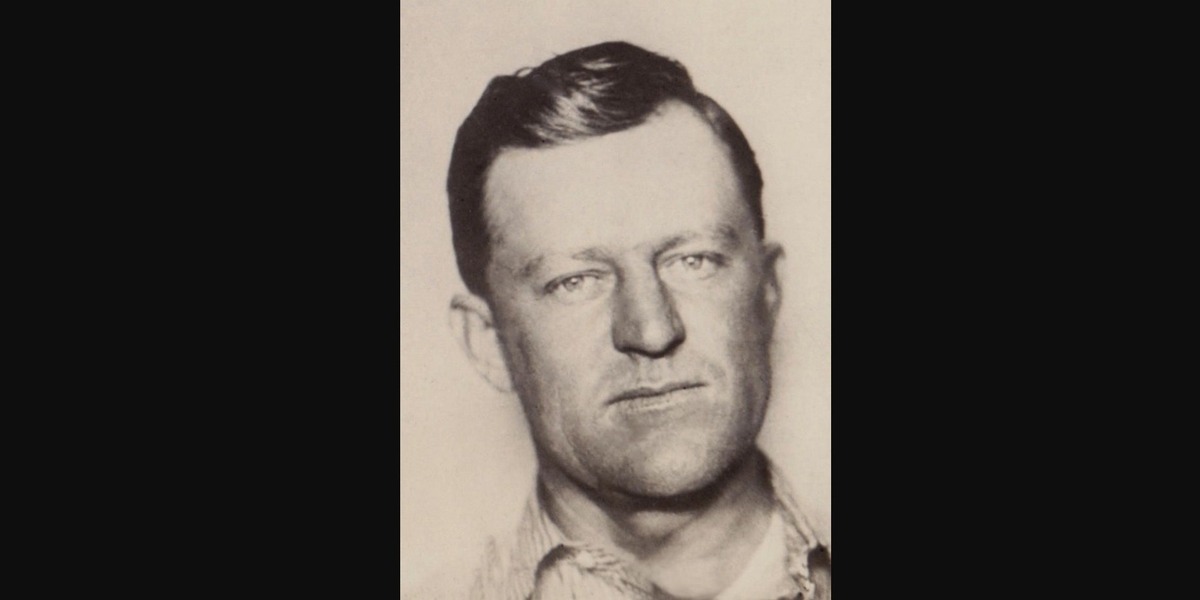Based on David Grann’s eponymous book, director Martin Scorsese’s ‘Killers of the Flower Moon‘ is a Western crime-drama film that revolves around a series of murders of the native tribes in the Osage Nation during the 1920s. In the conspiracy, Leonardo DiCaprio’s Ernest Burkhart is a central figure as he finds himself caught in the investigation of his in-laws’ suspected murders. Given Ernest Burkhart’s overall role in the narrative, especially his surprising involvement in the murders and eventual decision that gives the Bureau of Investigation a major lead, viewers must be curious to learn more about the real person and his life. If you are wondering whether Ernest Burkhart is based on a real person and why he was pardoned despite his ties to the crimes in Osage County, here is everything you need to know! SPOILERS AHEAD!
Yes, Ernest Burkhart Was a Real Person
The real-life Ernest Burkhart was well-known for his role in the Osage Indian murders in Osage County, Oklahoma, during the 1920s, also known as the “Reign of Terror.” Ernest George Burkhart was born in Campbell, Texas, on September 11, 1891. He married Mollie Kyle, an Osage tribe member, on February 14, 1917, in Pawnee, Oklahoma. The couple had at least three children. Following a brief stint in the military, Burkhart moved to Fairfax, Oklahoma. His known family includes his wife, Mollie; brothers, Horace and Bryan Burkhart; and uncle, William King Hale.

Burkhart was a key suspect in the murders of his wife’s cousin, Henry Roan, and sister-in-law, Rita Smith; her husband, William E. “Bill” Smith; and housekeeper, Nettie Brookshire. He was arrested on January 4, 1926, on charges of murder alongside his uncle William King Hale. However, Burkhart pleaded guilty to the charges and eventually became a government witness, implicating Hale in the murder of Roan, for which Hale was convicted.
It has been widely suspected that Hale was the mastermind behind the murders. His complete plan supposedly involved the murders of Mollie, Burkhart, and their children so that he could inherit the fortune from their headrights. Burkhart was sentenced to life imprisonment and served the sentence at Oklahoma State Penitentiary. He was later paroled and given a full pardon in 1966. After his parole, Burkhart worked in Wagon Mound, New Mexico. He died on December 1, 1986, in Pawnee, Oklahoma, aged 95.
Why Was Ernest Burkhart Pardoned?
After oil was discovered on the Osage Indian Reservation, Osage tribe members were entitled to a share of the profits through headrights, which were inheritable even by non-Osage family members. On May 22, 1921, Mollie’s sister, Anna Brown, was shot to death. Her mother, Lizzie Q. Kyle, who had inherited three full headrights and held one herself, died from suspected poisoning a few weeks later. Lizzie’s nephew, Henry Roan, died under similar circumstances in January 1923.

Lizzie’s other daughter, Rita Smith, the latter’s husband and housekeeper, died in a bombing of their residence on March 10, 1923. After the death of her family members, Mollie inherited their headrights. Eventually, the deaths were investigated by the Bureau of Investigation (now the FBI), and Burkhart’s uncle, William King Hale, now a successful cattle rancher with political influence in Osage, John Ramsey, a local cowboy, and Burkhart himself were the primary suspects in the Smith family’s murder case.
While Hale maintained his innocence during the trials, Burkhart pleaded guilty to being a part of the conspiracy in 1926. He turned the state’s witness and admitted that Hale hired Ramsey to kill Roan. Burkhart testified against Hale and Ramsey, and the latter confessed to killing Roan on Hale’s orders. As a result of Burkhart’s testimony, Hale was convicted of Roan’s murder and sentenced to life imprisonment alongside Ramsey. However, the reason for Burkhart testifying against his uncle has never been confirmed.
Burkhart was paroled in 1937 but had it revoked after involvement in a robbery in 1940. He reapplied for parole in 1959, which was granted. In 1966, Burkhart applied for a pardon. During his earlier parole hearing, Burkhart largely downplayed his involvement in the murders, claiming to be only a messenger. During his pardon hearing, Burkhart was granted a pardon by Governor Henry Bellmon after a 3-2 vote in favor of the pardon by the Oklahoma Parole Board.
According to the official court documents, Burkhart was granted a pardon on account of his good behavior during his prison sentence and because he had not violated the law since his parole in 1959. However, it is also speculated that Burkhart, turning a state witness and helping in Hale’s conviction, also contributed to the pardoning of his life sentence. Furthermore, since his earliest statement to the Bureau of Investigation, Burkhart had maintained that while he was aware of the conspiracy to murder his wife’s family, he did not play an active role in the murders. Thus, he likely received leniency during his pardon hearing and was free by 1966.
Read More: All The Locations Where Killers of the Flower Moon Was Filmed


You must be logged in to post a comment.